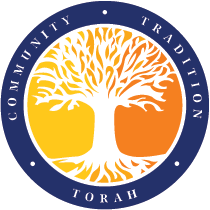Throughout Adath Israel’s early history, our congregation crossed paths with a number of important figures in the Jewish community. The Linder Archives includes correspondence with leaders of the Conservative movement as Adath was trying to establish itself in Trenton.
One of the important goals of the new synagogue was finding a rabbi. The congregation reached out to several rabbis in the field, including Israel Goldstein. He replied back in a letter from 1920, three years before Adath’s founding, with two questions: “1) How conservative is your Synagogue intended to be, is it to have an organ, is it to have family pews? 2) Who suggested my name to you?”
The 24-year-old Goldstein, who at the time was the rabbi of Congregation B’nai Jeshurun, the oldest Ashkenazic synagogue in New York, makes clear two of the important distinguishing qualities of a Conservative synagogue. Both an organ and mixed seating of men and women would not have been allowed at an Orthodox shul. It’s important to point out, however, that having “family pews” does not mean that women could fully participate in leading the service. Women in Conservative synagogues at the time could not yet serve as rabbi or hazzan or read from the Torah.
It’s unclear if Adath was able to have Goldstein visit Trenton, but he went on to serve 42 years as the rabbi of B’nai Jeshurun until he moved to Israel. Goldstein went on to become a major figure in the American Jewish community and the Zionist movement. Two institutions in Jerusalem are named after him: a synagogue at the Hebrew University and a Zionist youth village. The latter is the headquarters of Camp Ramah in Israel and was my home base when I participated in the Ramah Seminar teen summer program and also where my son Jonah lived 30 years later when he attended Ramah Jerusalem High School.
Also in our archives is a 1920 letter from RH Melamed to Phillip S. Perlman, one of the organizers of the effort to establish the new synagogue in Trenton, recommending Rabbi Abraham Burstein with great enthusiasm. Melamed implies that Burstein has a good singing voice which means the new congregation would not have to hire a cantor. He even suggests a salary of $4,000 a year (about $59,000 in 2023) since the 27-year-old Rabbi Burstein is married. Rabbi Burstein went on to become a noted editor, author, and poet. He wrote a series of children’s biographies of great rabbis of the past, including Maimonides and Rashi.
Then, as now, the flagship institution of the Conservative movement was the Jewish Theological Seminary in New York. Cyrus Adler (no relation), was president in 1923 and wrote to the organizers of the future Adath to let them know that “[s]everal of our students are very able preachers and if your Congregation desires it I may be able to recommend one of them to you.” In addition to heading JTS, Adler led many American Jewish communal organizations in the early twentieth century. He helped found the Jewish Publication Society of America, the American Jewish Historical Society, the United Synagogue of Conservative Judaism, and the American Jewish Committee.
While Adath may have occupied one small part of American Jewish life in the 1920s, it was an element of the larger story of development and growth in the early twentieth century. Many of the institutions being built at the time, including Adath, are still going strong and contributing to a thriving Jewish community today.
